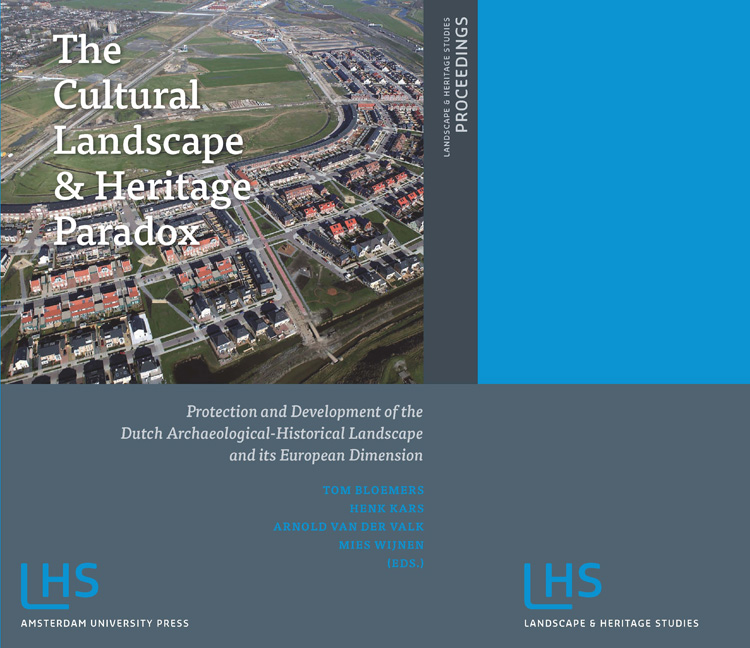 The Cultural Landscape and Heritage Paradox
The Cultural Landscape and Heritage Paradox Book contents
- Frontmatter
- Contents
- Preface
- I INTRODUCTION
- II INSIGHTS AND PROSPECTS OF ARCHAEOLOGICAL-HISTORICAL LANDSCAPE STUDIES
- III LINKING KNOWLEDGE AND ACTION
- IV IMAGINATION - FACTS AND CONSTRUCTIONS
- V SHARING KNOWLEDGE - STORIES, MAPS AND DESIGN
- VI SYNTHESIS AND CONCLUSIONS
- VII MANAGEMENT OF KNOWLEDGE
- VIII AGENDA FOR THE FUTURE
- IX SUMMARY
- X APPENDIX
- Subject Index
- Index of Places and Regions
10 - Presentation, Appreciation and Conservation of Liminal Landscapes: Challenges from an Irish Perspective (in Response to the Contribution by Bjørn Smit)
- Frontmatter
- Contents
- Preface
- I INTRODUCTION
- II INSIGHTS AND PROSPECTS OF ARCHAEOLOGICAL-HISTORICAL LANDSCAPE STUDIES
- III LINKING KNOWLEDGE AND ACTION
- IV IMAGINATION - FACTS AND CONSTRUCTIONS
- V SHARING KNOWLEDGE - STORIES, MAPS AND DESIGN
- VI SYNTHESIS AND CONCLUSIONS
- VII MANAGEMENT OF KNOWLEDGE
- VIII AGENDA FOR THE FUTURE
- IX SUMMARY
- X APPENDIX
- Subject Index
- Index of Places and Regions
Summary
ABSTRACT
This paper considers the challenges for archaeologists and environmentalists in elucidating past landscapes and presenting them effectively and in an attractive manner to the public within an Irish context. Ireland is rather exceptional in western Europe in that it was only in the last decade that it experienced strong economic development that involved large-scale infrastructural works. While such works inevitably result in destruction of parts of the natural and built heritage, they have also led to many new findings regarding Irish environment and heritage. Many of the new findings have been brought to public attention through well illustrated, attractive and readily available publications. In turn, this has led to increased public awareness of heritage and engagement with conservation and related issues. While these developments are briefly reviewed, the main focus is on liminal landscapes associated with peatlands and the challenges in highlighting the importance of these extensive landscapes and presenting them attractively to the public. Three such landscapes are considered in some detail, namely (i) Lough Boora Parklands, Co. Offaly, where the early Mesolithic environment has been recreated in situ; (ii) Céide Fields, north Mayo, where a Visitor Centre serves to explain the significance of an early Neolithic extensive field system hidden by blanket bog; and (iii) Barrees, Beara Peninsula, west Cork, where recent detailed archaeological survey and excavation and palaeoecological investigations have elucidated many aspects of a liminal landscape with rich but largely hidden evidence of past human activity and settlement.
KEYWORDS
Liminal landscapes, blanket bog; Mesolithic, Neolithic, Iron Age; human impact; Ireland
INTRODUCTION
Establishing a ‘cultural biography of landscapes’ is a major challenge for practitioners involved in the interpretation, presentation and conservation of cultural landscapes. The challenge arises from the multifaceted character of landscapes that makes it difficult to view landscapes in a holistic way whether the practitioners are archaeologists, environmentalists, educators or planners.
In this paper, some of the difficulties and possibilities are discussed from an Irish context and in the light of the considerations put forward by Bjorn Smit in his paper on the challenges facing Dutch authorities in improving awareness by the general public and planners of pre-farming cultures and specifically Mesolithic hunter/gatherer societies.
Information
- Type
- Chapter
- Information
- The Cultural Landscape and Heritage ParadoxProtection and Development of the Dutch Archaeological-Historical Landscape and its European Dimension, pp. 339 - 350Publisher: Amsterdam University PressPrint publication year: 2010